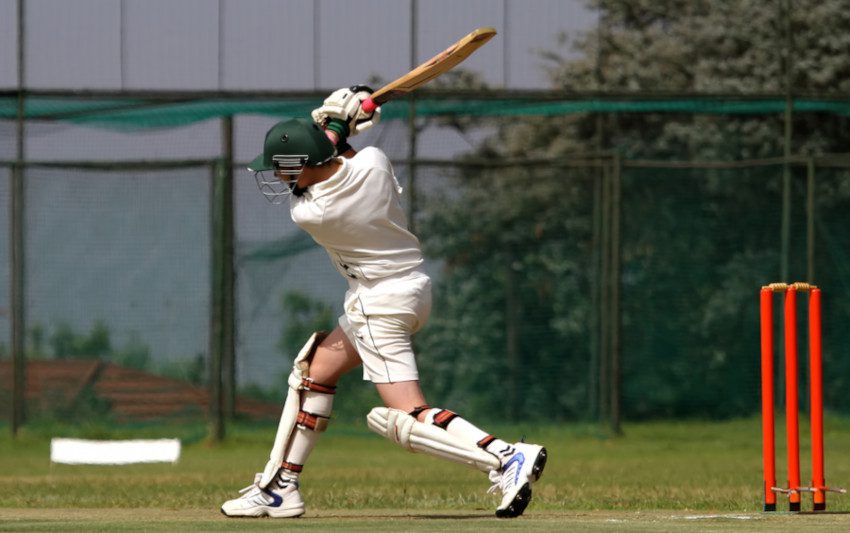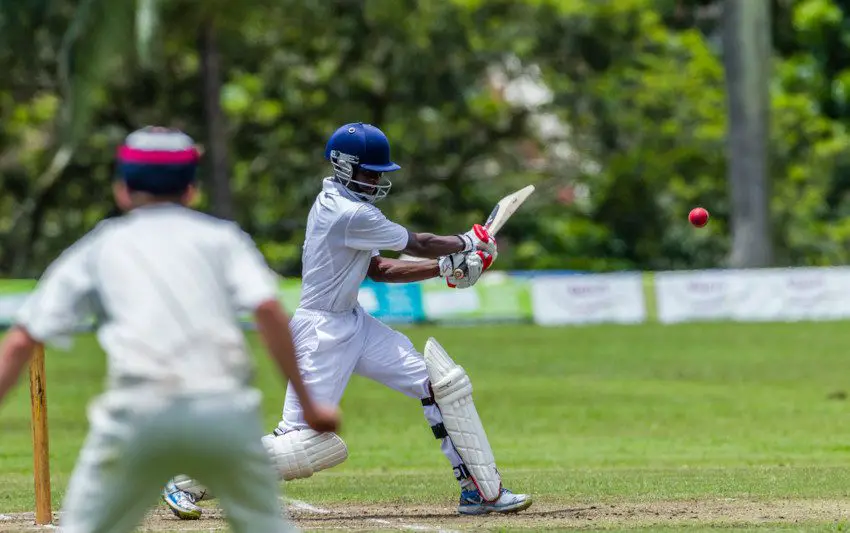Table of Contents
I’ve seen some of the world’s greatest fast bowlers in action: In one of my earliest visits to a test match back in 1976, I saw the great Michael Holding take England apart at The Oval and it was fascinating to see reel pace.
But how fast do bowlers bowl in the modern game and what have been the fastest deliveries in the history of the sport? Here is a quick guide.
How Fast do Bowlers Bowl in Cricket?
Genuine pace has the capacity to outdo any batsman, not just the tail enders. It’s a desirable quality for any bowler to have but the genuine speed merchants are very rare. An average seam or swing bowler in international cricket may deliver the ball at speeds of around 80 miles per hour (128 KPH).
With seam and swing as part of that weaponry, those bowlers have the chance to deceive a batsman but pace should not be an issue for the batting side.
For a player to be classed as a genuine fast bowler, they should really be hitting the 90 miles per hour mark on a regular basis. In those countries where they operate in KPH, they tend to look at a figure of 140 but this only translates to 86mph so I’d suggest it should be a fraction higher.
The Speed of the Cricket Ball
The factor that most observers are interested in is the speed of the ball when it leaves the bowler’s hand. There is a second measure, known as speed off the bat and this is the pace recorded when the batsman actually hits the ball.
Also known as the batted ball speed, this involves a complicated calculation which takes in the pace of the ball, the speed of the bat swing, and the mass of the bat.
Speeds can be reduced based on the type of bowling. Spin will often be slower but swing could also reduce the overall speed of the delivered ball.
The Fastest Deliveries in Cricket
Here are the five fastest (official) deliveries in the history of cricket.
1. Shoaib Akhtar: Pakistan. 100.2 mph (161.3 kph)
In 2003, the man known as the Rawalpindi Express became the first bowler to break the 100mph barrier and his record still stands to this day.
The record breaking ball came while Shoaib was playing for Pakistan against England in the 2003 World Cup and he also went on to become the first man to exceed 100mph twice.
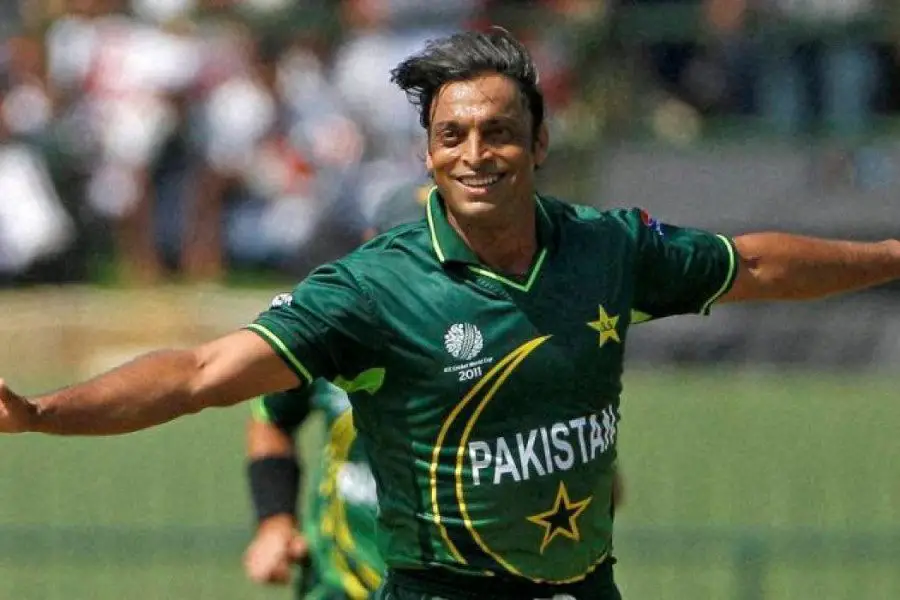
2. Brett Lee: Australia. 100.1 mph (161.1 kph)
Brett Lee appeared at a golden time for pace bowling where he, Shoaib Akhtar and others would try to outperform each other for speed.
Lee’s fastest ever delivery was recorded at 100.1 mph while playing for Australia against New Zealand in Napier in 2005.
3. Shaun Tait: Australia. 100.1 mph (161.1 kph)
Like a lot of fast bowlers, Shaun Tait was injury prone and that’s a great shame. He was also around in the mid-2000s at the time of Akhtar and Lee but he did, at least, get his name on this list.
Tait matched Brett Lee with a 100.1 mph delivery in a match against England at Lord’s in 2010.
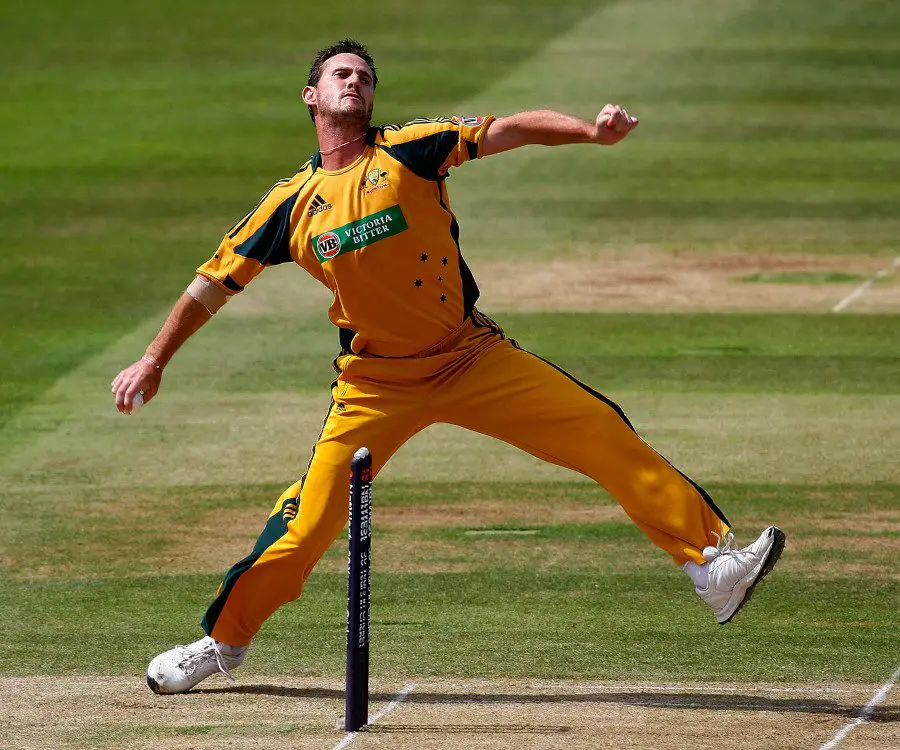
4. Jeff Thomson: Australia. 99.8 mph (160.6 kph)
Australia’s Jeff Thomson was a fearsome opponent when at his peak with his ‘javelin thrower’s’ action. Along with Dennis Lillee, he dismantled England in the Ashes series of 1974/75 but ‘Tommo’ was by far the quicker of the two men.
His own personal best of 99.8mph came against the West Indies in Perth in 1975.
5. Mitchell Starc: Australia 99.7 mph (160.4 kph)
Australians dominate this list and completing the famous five is left arm paceman Mitchell Starc. He is best known as a swing bowler so it’s impressive that he’s made it here.
Starc’s best effort of 99.7mph came in a hostile test series against New Zealand.
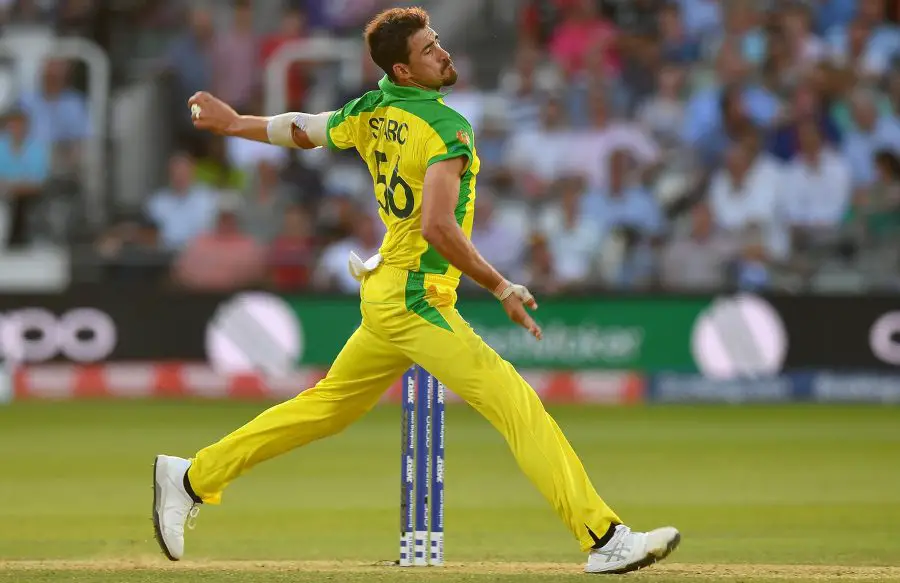
How to Calculate Bowling Speed
Commentators often refer to the speed gun while, after every delivery that the faster bowlers send down, speeds are shown during televised matches. If, like most amateur cricketers, you don’t own a speed gun, this is how you can calculate your bowling speed using a stopwatch:
- Ask a friend to measure the time that the ball takes to leave the bowler’s hand and cover the 22 yards to reach the batsman.
- Speed = distance divided by time.
For batted ball speed, this is far more complicated. Take the bowling speed, plus the bat speed, incorporate the mass of the bat, and perform a complex equation. If this is really important to your game, expensive speed guns are really the most accurate answer here.
Who are the Fastest Bowlers in World Cricket Who are Still Playing?
When I came to update this article in 2024, I was expecting to add some new names to the list. However, the top five that I wrote about back in 2021 remained unchanged.
Has fast bowling gone out of the game, or are these some really special talents from a golden era?
There are certainly some very quick pacers around right now, and in England, we make a big deal about Mark Wood and Jofra Archer. Both men are capable of bowling regularly in the high 90 mph bracket, but they suffer from a common problem among genuine quicks.
Wood and Archer have both struggled with injuries. As I write this in October 2024, Wood is currently undergoing treatment, while Archer’s workload is being managed as he makes a comeback.
They are among the fastest bowlers still playing, but do those injury issues mean that neither will be capable of hitting the 100 mph mark?
Another fast bowler I’ve watched with interest is Umran Malik. When he burst onto the scene with Sunrisers Hyderabad in the IPL, he had the potential to become one of India’s quickest ever bowlers. He’s since played international cricket, but the problem with Umran Malik seems to lie with accuracy and consistency.
There are some other genuinely quick bowlers from around the cricket world. The New Zealand pair of Lockie Ferguson and Adam Milne are capable of speeds close to 150 kph. India’s Jasprit Bumrah is only just behind them in terms of pace.
South Africa have produced an exciting quick in the shape of Nandre Burger, while the West Indies are fighting back with the likes of Oshane Thomas and Shamar Joseph. Pakistan are also producing genuinely fast bowlers, even if they can’t seem to decide on their best attack.
Even the greats of the past suffered from injury, but fitness seems to be a bigger problem in the modern day. For that reason, we may not see the 100 mph mark broken again, and the challenge remains for today’s generation of pacers to break into this top five.
Closing Thoughts
It’s been interesting to go through this section as pace bowling has fascinated me ever since seeing it in action back in 1976. What was surprising was the absence of any West Indian quicks in that top five list. On the other hand, it would be a very different list, if we ranked the most beautiful fast bowling actions…
The fastest deliveries however seem to be a match between Pakistan vs Australia. It leaves me with the question as to whether Shoaib Akhtar’s mark of 100.2 mph will ever be beaten?

